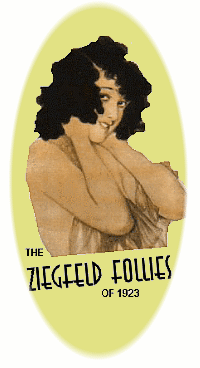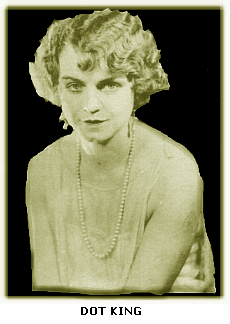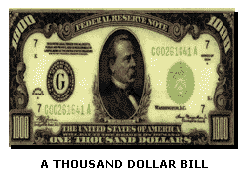"A moth, too close to the flame. . . ."
�--ALVIN DAVIS
 Dot King came out of the Ziegfeld Follies chorus. She had a doll's face and an hour-glass body. She had
nighttime New York at her feet. She had her choice of men: sugar daddies, playboys, top-hatted stage-door
Johnnies bearing red roses, and at least one Just Plain Gigolo. She had diamonds and furs and a plush bachelor-girl
apartment five minutes from the Great White Way. In her way, she had everything.
Dot King came out of the Ziegfeld Follies chorus. She had a doll's face and an hour-glass body. She had
nighttime New York at her feet. She had her choice of men: sugar daddies, playboys, top-hatted stage-door
Johnnies bearing red roses, and at least one Just Plain Gigolo. She had diamonds and furs and a plush bachelor-girl
apartment five minutes from the Great White Way. In her way, she had everything.
Billie Bradford, Dot King's maid, found her sprawled lifeless across her bed on the morning of March 15, 1923.
Billie grabbed up a pair of yellow silk men's pajamas from a chair near the bed, stuffed them under a cushion on the
living room couch, and then went out to get a cop. The intern who answered the routine ambulance call said it
looked like suicide to him, but Dr. Charles Norris, the Chief Medical Examiner, put it down as murder. He
detected signs of a struggle in the grotesque way the ex-Follies girl's right arm was twisted behind her back.
He thought the killer probably had snuffed out her life with chloroform while trying to subdue her during a robbery;
there was an empty chloroform bottle in the room.
 The slain twenty-seven-year-old beauty's missing baubles included a $15,000 ruby necklace, two diamond bracelets, a
diamond and emerald studded wrist watch and other trifles, adding up to about $30,000 worth.
The slain twenty-seven-year-old beauty's missing baubles included a $15,000 ruby necklace, two diamond bracelets, a
diamond and emerald studded wrist watch and other trifles, adding up to about $30,000 worth.
Mrs. Anna Keenah, Dot King's mother, leaned to the murder theory, with or without the robbery motive.
She even named the man--Alberto Santos Guimares, a Latin Man-About-Manhattan, complete with sideburns and
mustache. She said Dot loved Alberto intensely, furnished all his spending money and got nothing but
beatings in return. But the grieving Senor was able to show that he was on the speakeasy rounds all
night and never came near the girl.
 The variety of love letters found in the apartment from an assortment of admirers turned up only one that
seemed fruitful. "Darling Dottie," it began. "Only two days before I will be with you. I
want to see you, O so much! And to kiss your pretty pink toes . . ." This burst of passion was traced to J. Kearsley Mitchell, wealthy son-in-law of Edward T. (Uncle Ned) Stotesbury, celebrated in his time as
the sole arbiter of Philadelphia's Four Hundred. Mitchell conceded that the purple prose and the yellow
pajamas fit his style. He said he liked Dot King and sometimes tucked $1,000 bills under her pillow to prove it.
He said he and his attorney spent the day of March 14 with the playgirl separately in the boudoir and together
in the town's flossier resorts, and bid her good night at 2:30 A.M., some time before the murder.
The variety of love letters found in the apartment from an assortment of admirers turned up only one that
seemed fruitful. "Darling Dottie," it began. "Only two days before I will be with you. I
want to see you, O so much! And to kiss your pretty pink toes . . ." This burst of passion was traced to J. Kearsley Mitchell, wealthy son-in-law of Edward T. (Uncle Ned) Stotesbury, celebrated in his time as
the sole arbiter of Philadelphia's Four Hundred. Mitchell conceded that the purple prose and the yellow
pajamas fit his style. He said he liked Dot King and sometimes tucked $1,000 bills under her pillow to prove it.
He said he and his attorney spent the day of March 14 with the playgirl separately in the boudoir and together
in the town's flossier resorts, and bid her good night at 2:30 A.M., some time before the murder.
 So the red-faced society
leader was permitted to go home to Philadelphia's even redder-faced Main Line.
So the red-faced society
leader was permitted to go home to Philadelphia's even redder-faced Main Line.
The investigation withered.
The tabloid writers who used to call Dot King the Broadway Butterfly changed it to the Broken Butterfly and let it go at
that. It remains one of the more intriguing chapters in the history of sinful New York.


 Dot King came out of the Ziegfeld Follies chorus. She had a doll's face and an hour-glass body. She had
nighttime New York at her feet. She had her choice of men: sugar daddies, playboys, top-hatted stage-door
Johnnies bearing red roses, and at least one Just Plain Gigolo. She had diamonds and furs and a plush bachelor-girl
apartment five minutes from the Great White Way. In her way, she had everything.
Dot King came out of the Ziegfeld Follies chorus. She had a doll's face and an hour-glass body. She had
nighttime New York at her feet. She had her choice of men: sugar daddies, playboys, top-hatted stage-door
Johnnies bearing red roses, and at least one Just Plain Gigolo. She had diamonds and furs and a plush bachelor-girl
apartment five minutes from the Great White Way. In her way, she had everything. The slain twenty-seven-year-old beauty's missing baubles included a $15,000 ruby necklace, two diamond bracelets, a
diamond and emerald studded wrist watch and other trifles, adding up to about $30,000 worth.
The slain twenty-seven-year-old beauty's missing baubles included a $15,000 ruby necklace, two diamond bracelets, a
diamond and emerald studded wrist watch and other trifles, adding up to about $30,000 worth. The variety of love letters found in the apartment from an assortment of admirers turned up only one that
seemed fruitful. "Darling Dottie," it began. "Only two days before I will be with you. I
want to see you, O so much! And to kiss your pretty pink toes . . ." This burst of passion was traced to J. Kearsley Mitchell, wealthy son-in-law of Edward T. (Uncle Ned) Stotesbury, celebrated in his time as
the sole arbiter of Philadelphia's Four Hundred. Mitchell conceded that the purple prose and the yellow
pajamas fit his style. He said he liked Dot King and sometimes tucked $1,000 bills under her pillow to prove it.
He said he and his attorney spent the day of March 14 with the playgirl separately in the boudoir and together
in the town's flossier resorts, and bid her good night at 2:30 A.M., some time before the murder.
The variety of love letters found in the apartment from an assortment of admirers turned up only one that
seemed fruitful. "Darling Dottie," it began. "Only two days before I will be with you. I
want to see you, O so much! And to kiss your pretty pink toes . . ." This burst of passion was traced to J. Kearsley Mitchell, wealthy son-in-law of Edward T. (Uncle Ned) Stotesbury, celebrated in his time as
the sole arbiter of Philadelphia's Four Hundred. Mitchell conceded that the purple prose and the yellow
pajamas fit his style. He said he liked Dot King and sometimes tucked $1,000 bills under her pillow to prove it.
He said he and his attorney spent the day of March 14 with the playgirl separately in the boudoir and together
in the town's flossier resorts, and bid her good night at 2:30 A.M., some time before the murder.
 So the red-faced society
leader was permitted to go home to Philadelphia's even redder-faced Main Line.
So the red-faced society
leader was permitted to go home to Philadelphia's even redder-faced Main Line.